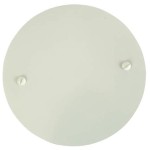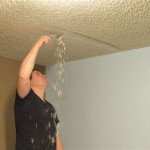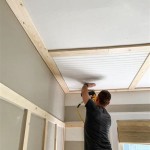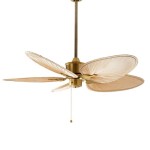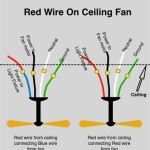Room Divider Panels: Floor-to-Ceiling Solutions for Space Management
Room divider panels, particularly those extending from floor to ceiling, represent a versatile and increasingly popular solution for optimizing living and working spaces. These panels serve as both functional partitions and aesthetic enhancements, providing a means to redefine areas without the permanence and cost associated with traditional construction. The selection and implementation of floor-to-ceiling room divider panels require careful consideration of architectural context, desired functionality, and material properties.
The primary appeal of floor-to-ceiling room divider panels lies in their adaptability. They facilitate the creation of distinct zones within a larger room, catering to diverse needs such as creating a home office nook, delineating a dining area from a living room, or establishing private spaces within a shared bedroom. Unlike fixed walls, these panels offer a degree of flexibility, allowing for reconfiguration as spatial requirements evolve. This adaptability makes them an ideal choice for renters and homeowners seeking to maximize their space efficiently.
Beyond their space-dividing capabilities, these panels contribute significantly to the aesthetic character of a room. Available in a wide array of materials, finishes, and designs, they can be employed to complement or contrast existing décor. From sleek, minimalist designs that blend seamlessly with modern interiors to intricately patterned panels that serve as statement pieces, the aesthetic possibilities are extensive. Furthermore, the material choice significantly impacts the panel's sound absorption properties and light transmission, adding another layer of design consideration.
Key Point 1: Functionality and Space Optimization
The core function of floor-to-ceiling room divider panels is to optimize space and create functional zones within a larger area. This is achievable through various design and installation approaches, directly impacting the use and perception of the space.
One of the most common applications is creating a home office within a living room or bedroom. By strategically positioning a floor-to-ceiling panel, a defined workspace is established, offering privacy and minimizing distractions. The visual barrier helps to mentally separate work from leisure, increasing productivity and enhancing focus. This is particularly beneficial in open-concept homes where dedicated office space may be limited.
In shared living spaces, such as apartments or dormitories, these panels can provide much-needed privacy. By dividing a single room into two or more distinct zones, each occupant can enjoy a sense of personal space. Options like opaque panels or those with sound-dampening properties further enhance privacy and reduce noise levels. The division can be particularly beneficial for students sharing a room, allowing for independent study and sleep schedules.
Floor-to-ceiling panels can also be used to delineate different functional areas within a single room, such as separating a dining area from a living room or creating a reading nook. The visual separation helps to define the purpose of each zone, making the space feel more organized and intentional. This is especially useful in smaller apartments or homes where maximizing space is crucial.
The flexibility of these panels extends beyond creating fixed divisions. Many designs incorporate sliding or folding mechanisms, allowing for the space to be easily reconfigured as needed. A sliding panel, for example, can be opened up to create a larger, more open space for entertaining or closed to provide privacy when desired. This dynamic functionality makes floor-to-ceiling room dividers a versatile solution for evolving spatial needs.
Beyond the creation of physical barriers, these panels can also influence the flow of light and air throughout a room. Panels with integrated windows or translucent materials allow natural light to penetrate into the divided spaces, preventing them from feeling dark and claustrophobic. Strategically positioned panels can also improve ventilation by directing airflow throughout the room. The impact can be significant, improving the overall comfort and habitability of the space.
Key Point 2: Material Selection and Aesthetic Considerations
The choice of material for floor-to-ceiling room divider panels plays a crucial role in both their functionality and aesthetic appeal. Each material offers unique properties and visual characteristics that can significantly impact the overall look and feel of a room.
Wood panels offer a classic and timeless aesthetic, bringing warmth and natural texture to a space. They can be stained, painted, or left natural to complement a variety of décor styles. Solid wood provides excellent sound insulation and privacy, while slatted wood panels allow for some light and air to pass through, creating a more open and airy feel. The type of wood used also influences the aesthetic, from the rich tones of mahogany to the light and airy feel of pine.
Metal panels offer a more contemporary and industrial aesthetic. They are durable, low-maintenance, and can be customized with a variety of finishes, such as powder coating or brushed metal. Perforated metal panels allow for some visibility and airflow, while solid metal panels provide complete privacy. Metal panels are often used in modern lofts and open-concept spaces to create a sleek and minimalist look.
Glass panels offer a modern and elegant aesthetic, allowing for maximum light transmission and creating a sense of openness. They can be clear, frosted, or tinted to control the level of privacy. Glass panels are often used in offices and retail spaces to create a professional and sophisticated atmosphere. The use of textured or patterned glass can add visual interest and enhance privacy without completely blocking light.
Fabric panels offer a soft and textured aesthetic, adding warmth and visual interest to a space. They are available in a wide variety of colors, patterns, and textures, allowing for endless design possibilities. Fabric panels can also provide excellent sound absorption, making them ideal for use in noisy environments. The choice of fabric can significantly impact the aesthetic, from the luxurious feel of velvet to the casual comfort of linen.
Beyond the primary material, the finish and design details of the panels also contribute to their aesthetic appeal. The hardware used to attach the panels to the floor and ceiling should be chosen carefully to complement the overall design. The edges of the panels can be finished with trim or left raw for a more minimalist look. The addition of decorative elements, such as artwork or shelving, can further personalize the panels and integrate them seamlessly into the existing décor.
The integration of lighting is another important aesthetic consideration. Backlighting the panels can create a dramatic effect, highlighting their texture and adding ambient light to the room. Incorporating recessed lighting into the panels can provide task lighting for specific areas. The strategic use of lighting can significantly enhance the visual impact of the panels and create a more inviting and functional space.
Key Point 3: Installation and Structural Considerations
The successful implementation of floor-to-ceiling room divider panels hinges on careful installation and meticulous consideration of structural factors. Improper installation can lead to instability, damage to surrounding surfaces, and ultimately, a compromised aesthetic and functional outcome.
Before initiating the installation process, a thorough assessment of the floor and ceiling structure is paramount. It is crucial to determine the load-bearing capacity of these surfaces to ensure they can adequately support the weight of the panels. In older buildings or those with questionable structural integrity, consulting with a structural engineer may be necessary to ascertain the suitability of the intended installation.
The attachment mechanism of the panels to the floor and ceiling is a critical factor influencing stability and safety. Options range from direct bolting to the structure to the use of tension systems that distribute the load more evenly. The choice of method depends on the weight of the panels, the material of the floor and ceiling, and the desired level of permanence. Careful consideration must be given to anchoring systems that are robust enough to withstand accidental impacts or stresses.
Precise measurements are essential to ensure a seamless and visually appealing installation. Any discrepancies in height or width can lead to gaps or misalignments that detract from the overall aesthetic. The use of laser levels and other precision tools is highly recommended to achieve accurate measurements. It's also important to account for any irregularities in the floor or ceiling surfaces, such as sloping or unevenness, which may require shimming or other adjustments to ensure a plumb and level installation.
For panels that incorporate moving parts, such as sliding or folding mechanisms, the installation process becomes even more complex. These mechanisms require precise alignment and smooth operation to function properly. It is essential to follow the manufacturer's instructions carefully and to use high-quality hardware to ensure reliable performance. Regular maintenance, such as lubricating moving parts, may be necessary to prolong the lifespan of these mechanisms.
Electrical considerations are also important if the panels incorporate lighting or other electrical components. All electrical work should be performed by a qualified electrician in accordance with local building codes. Wiring should be concealed within the panels and properly grounded to prevent electrical hazards. The placement of electrical outlets and switches should be carefully planned to ensure convenient access and minimize visual clutter.
Finally, it is important to consider the impact of the installation on the surrounding environment. Protect flooring and furniture from damage during the installation process. Avoid using harsh chemicals that could damage the panels or the surrounding surfaces. Proper ventilation is necessary to minimize dust and fumes during construction. A clean and organized work area will contribute to a more efficient and successful installation.

Portafab Floor To Ceiling Wall Partitions

10 Creative Floor To Ceiling Room Divider Ideas

Room Dividers Screen Partitions Made To Size

10 Wood Slat Room Divider Ideas You Can Buy Or Diy

Soundproof Room Dividers Acoustic Folding Partitions Netwell

Room Dividers The Sliding Door Company

Buy Custom Room Divider Panels Choose Your Material And Color Plywood Mdf Pvc Personalized Design Options Online In Etsy

Contractors Wardrobe Room Dividers The Home

Room Divider Panels Custom Size Screen Indoor And Outdoor Partition Hanging Modern Etsy

Metal Floor To Ceiling Room Divider No208 Bespoke Size

